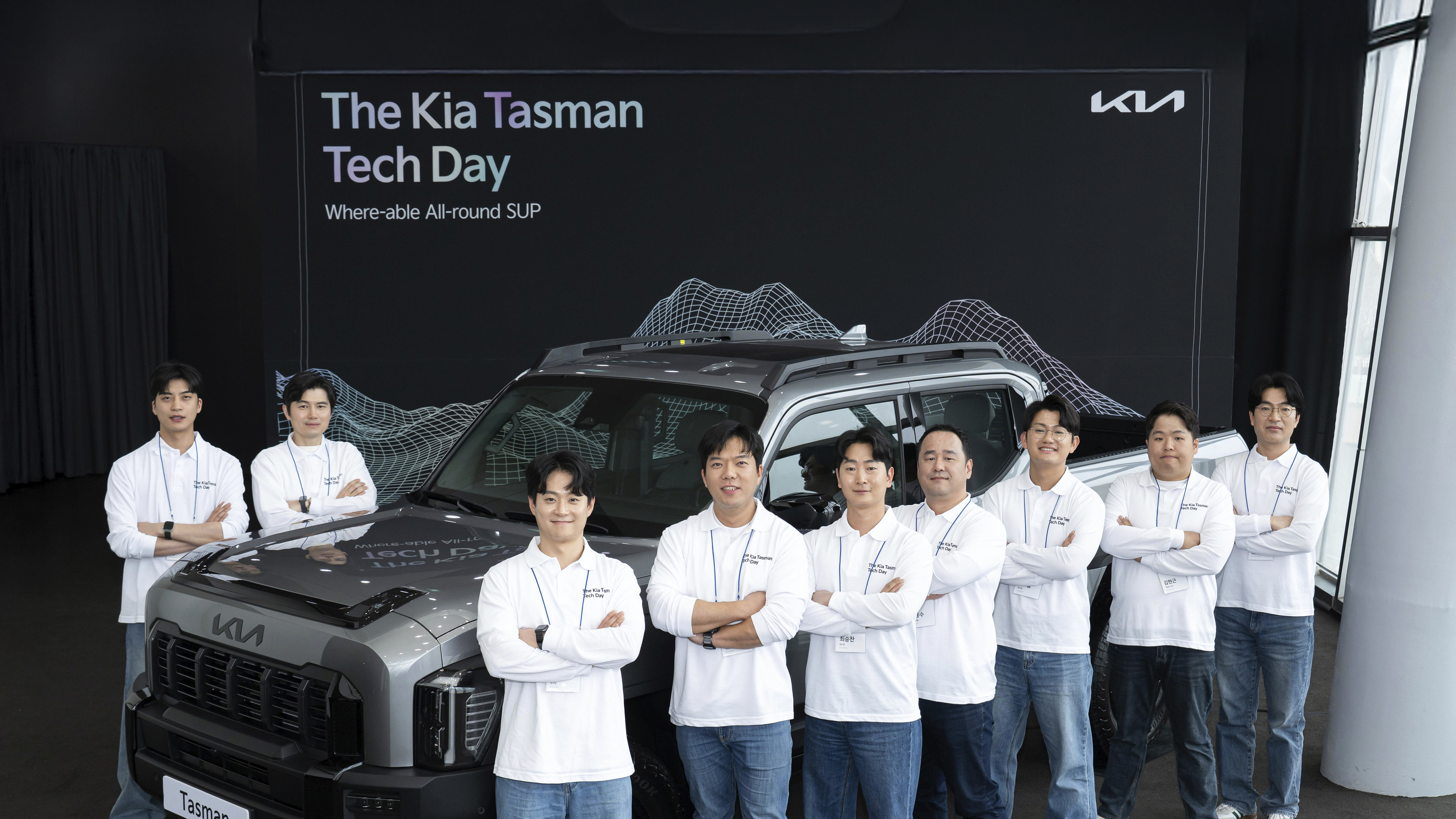
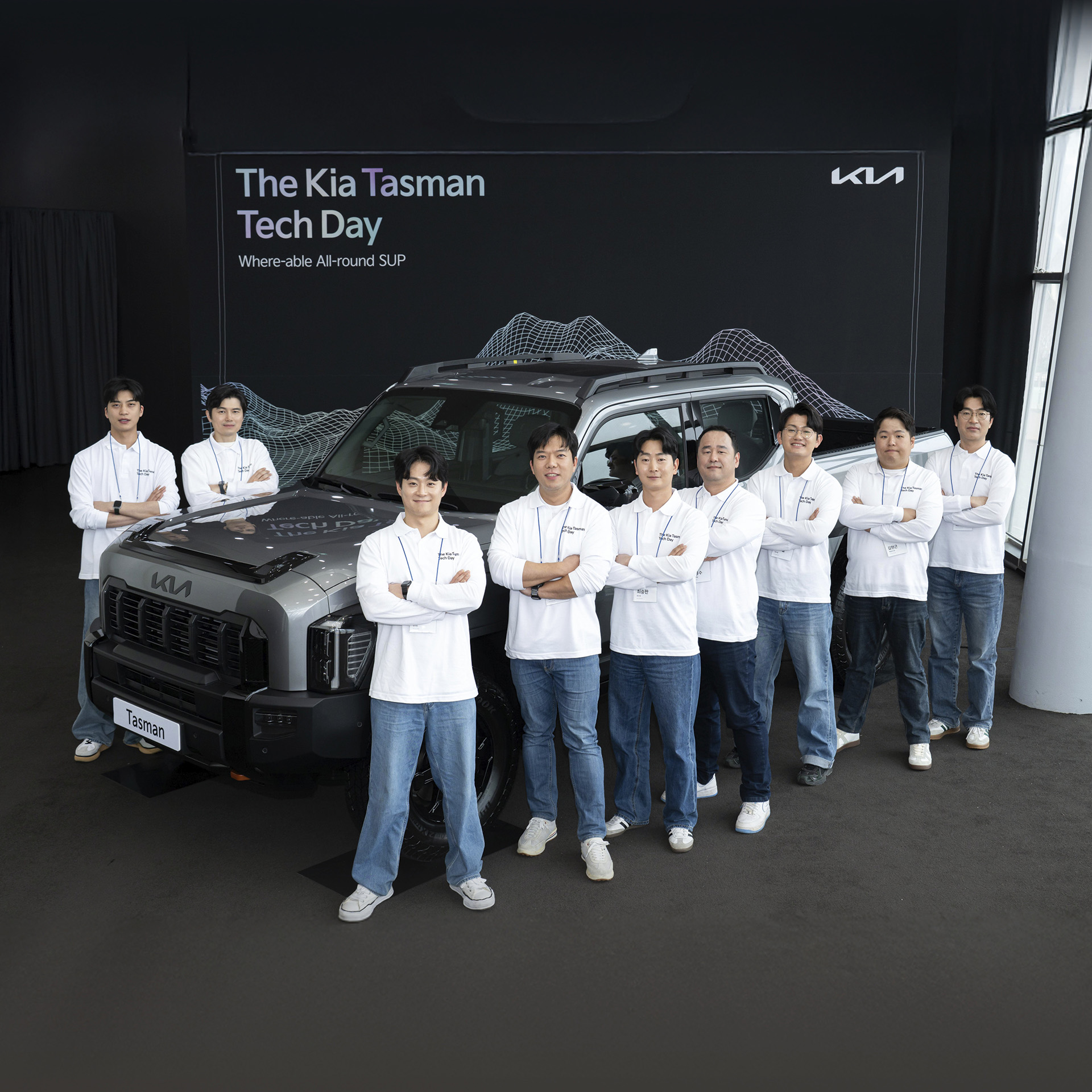


Ever since its debut, the Kia Tasman has been generating real buzz among truck fans. As Kia’s first true pickup, it’s expected to offer top-of-the-line performance on any terrain—be it pavement or backcountry trails—along with a wide array of convenience features that put it at the head of its class. On July 27, Kia hosted “The Kia Tasman Tech Day,” giving media outlets and influencers a deep dive into the Tasman’s standout qualities.
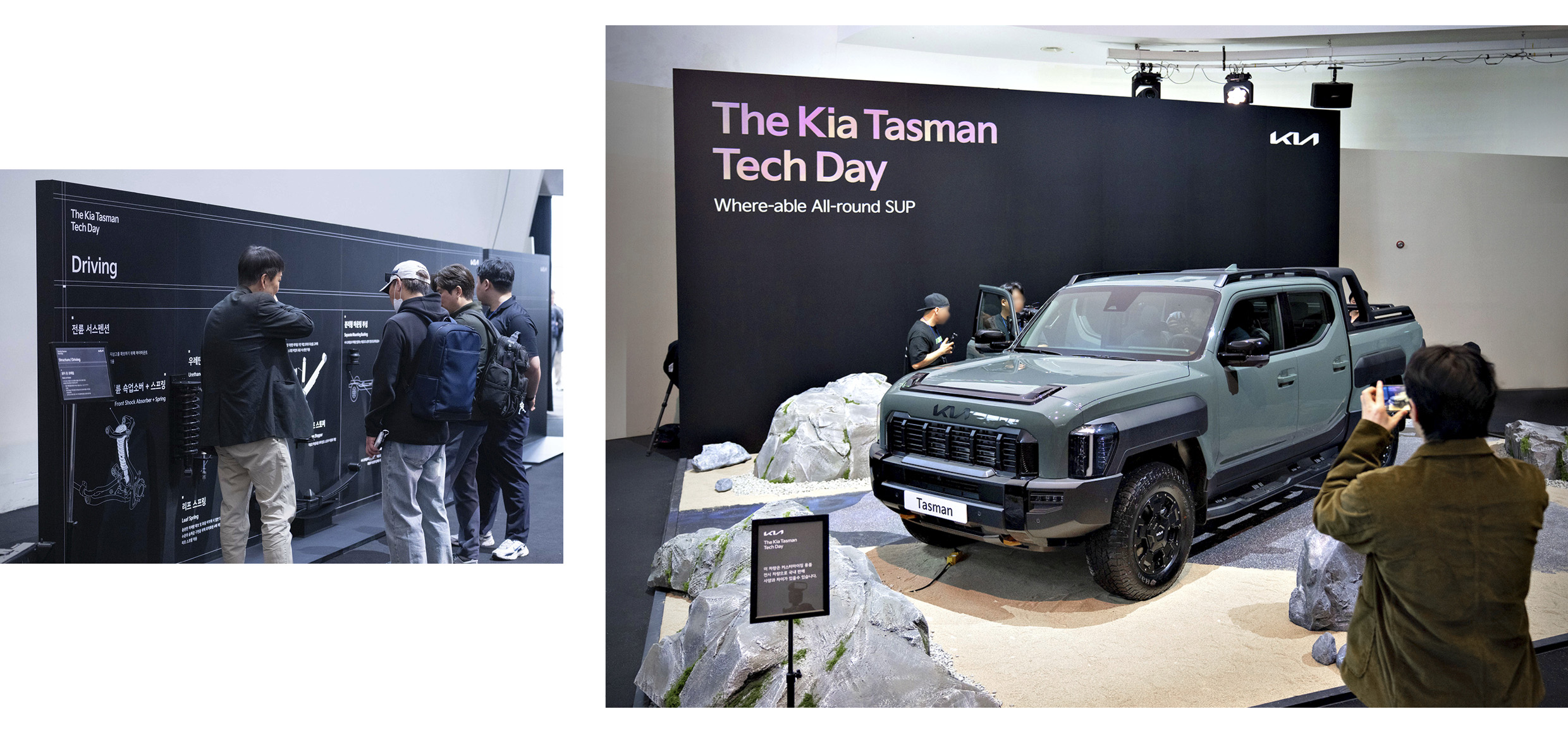
Three Tasman trucks were on full display, along with an exhibit of key components. Attendees got an up-close look at the frame forming the truck’s backbone, off-road tech like the e-LD (electronic locking differential) and two-speed ATC (active transfer case), special air intake ducting and fender-side covers for water fording, plus the R&H (Ride & Handling) and NVH (Noise, Vibration, Harshness) engineering that keeps things smooth and quiet.
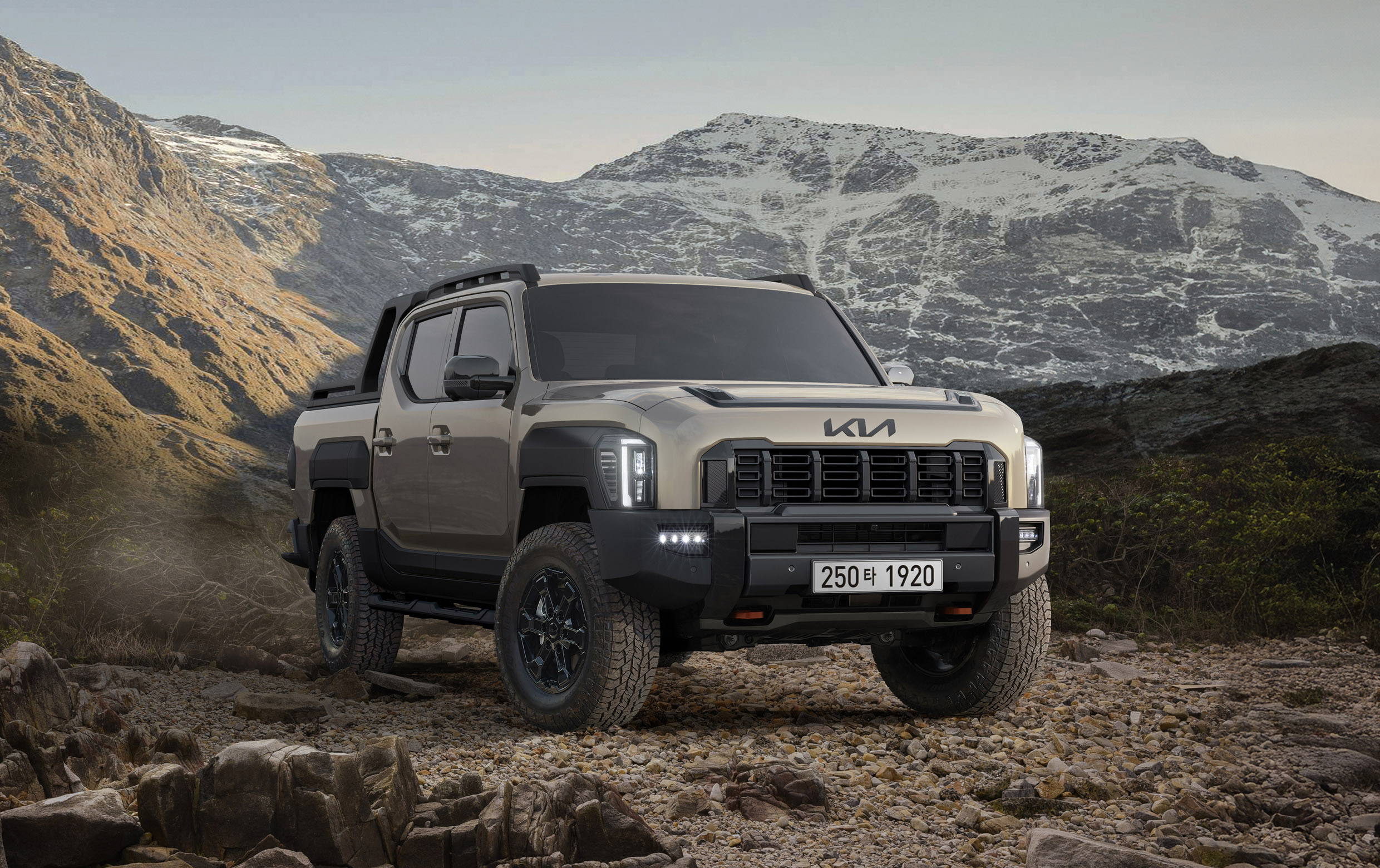
The overarching theme behind the Tasman’s development was “Break the Original,” blending a traditional body-on-frame pickup foundation with the comfort and convenience usually found in a family SUV. Senior Research Engineer Dong-ho Choi from Kia’s MLV Project Team 1, who oversaw the Tasman’s entire creation, kicked things off with the first presentation.

Choi explained, “We conducted extensive research to ensure more customers could discover and enjoy the many facets of a pickup. We set out to address typical truck weaknesses—like the lack of advanced features and cramped rear seating—to provide genuinely unique value.” That’s how the Tasman came to embody what Kia calls an “all-around sport utility pickup,” boasting remarkable off-road prowess, a cabin roomy enough for the whole family, and a bed geared to make it a versatile tool for both work and play.
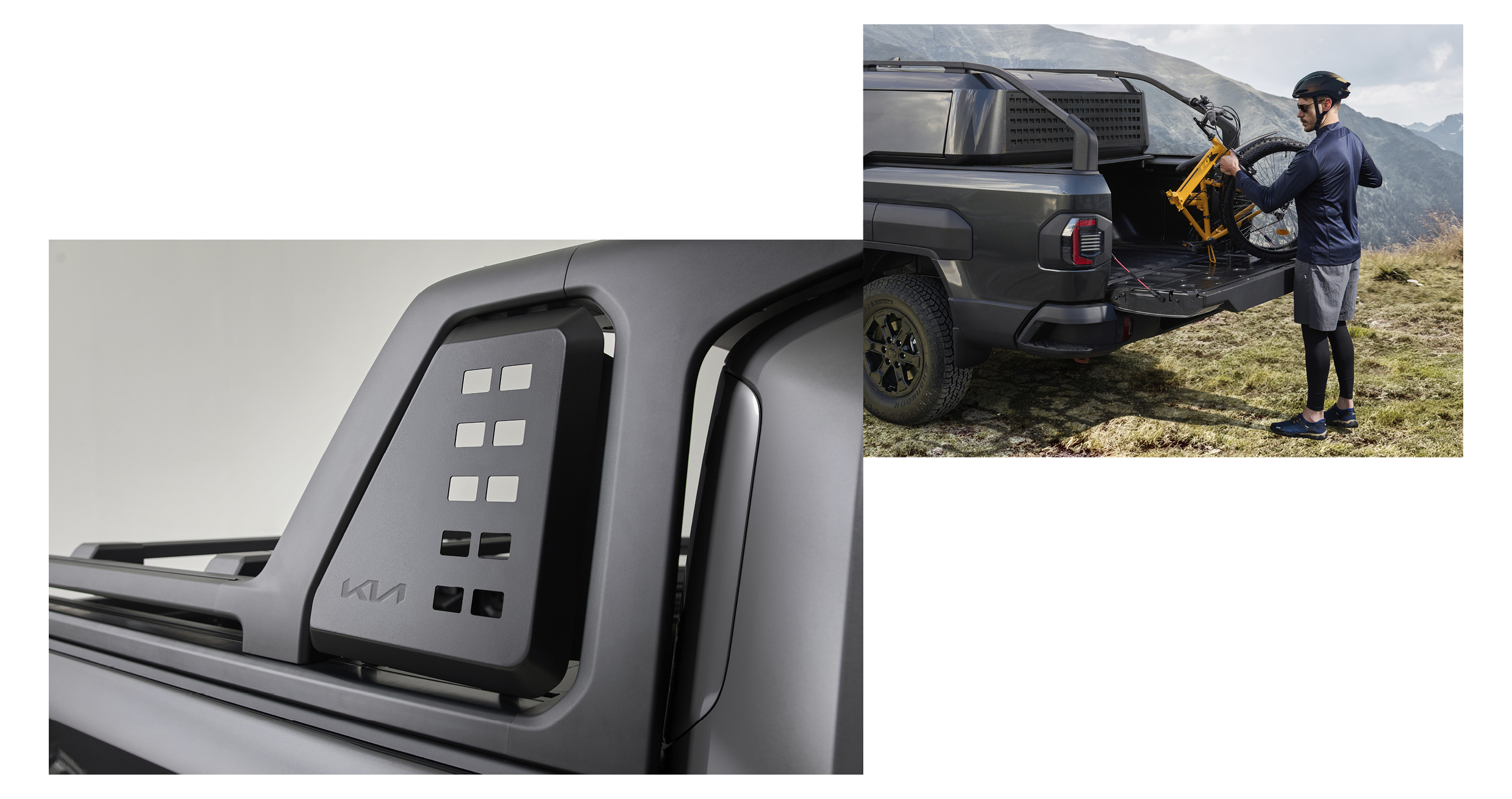
Pickup ownership often revolves around customization, and Tasman was designed from the get-go to accommodate a range of user preferences. “All of Tasman’s customization items are developed as genuine parts, thoroughly vetted for practicality and durability,” Choi said. “We offer different canopies and sports bars, which greatly expand the Tasman’s usability.”
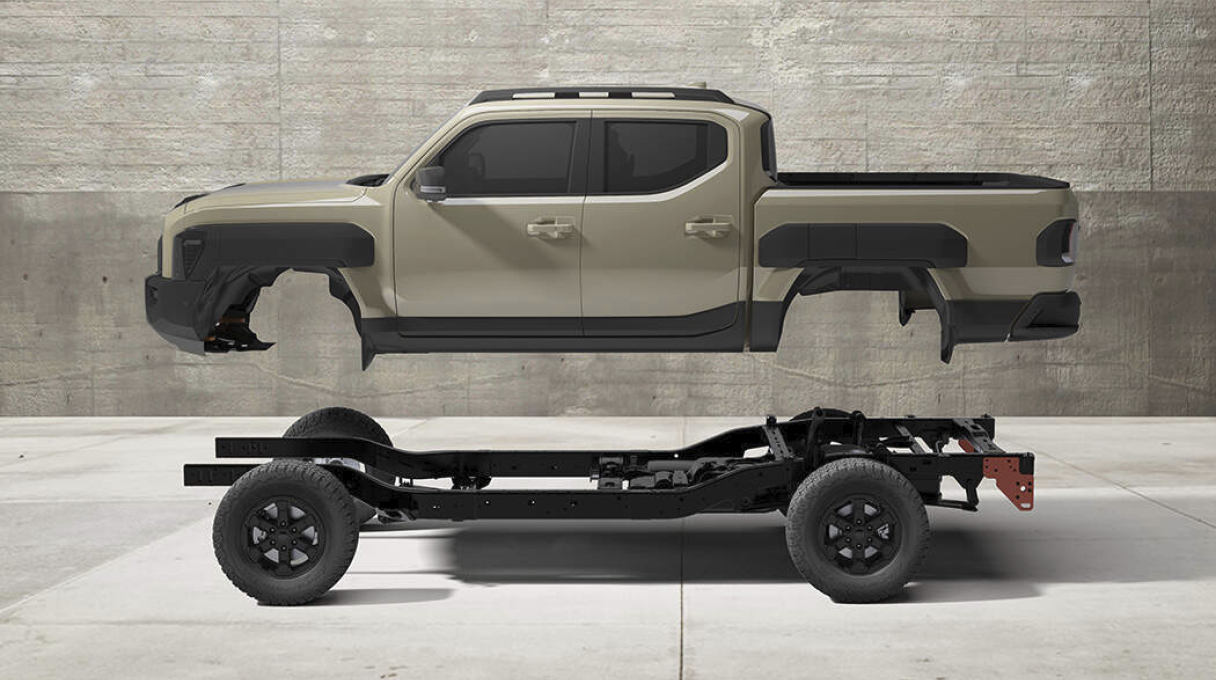
Still, Kia kept its eyes on the basics that define a real pickup: the ability to haul people and cargo without breaking a sweat, tow heavy loads, and conquer rough terrain. Kia chose a traditional body-on-frame layout—common among hard-core off-road trucks—and shaped the Tasman’s exterior with unpaved adventures in mind.

During his segment, Lee noted, “Body-on-frame architecture can handle heavier loads than a unibody and does a stellar job soaking up road impacts, enhancing NVH performance.” The Tasman’s key components—transmission, fuel tank, exhaust—are mounted higher up on the frame to fend off damage during off-road driving.
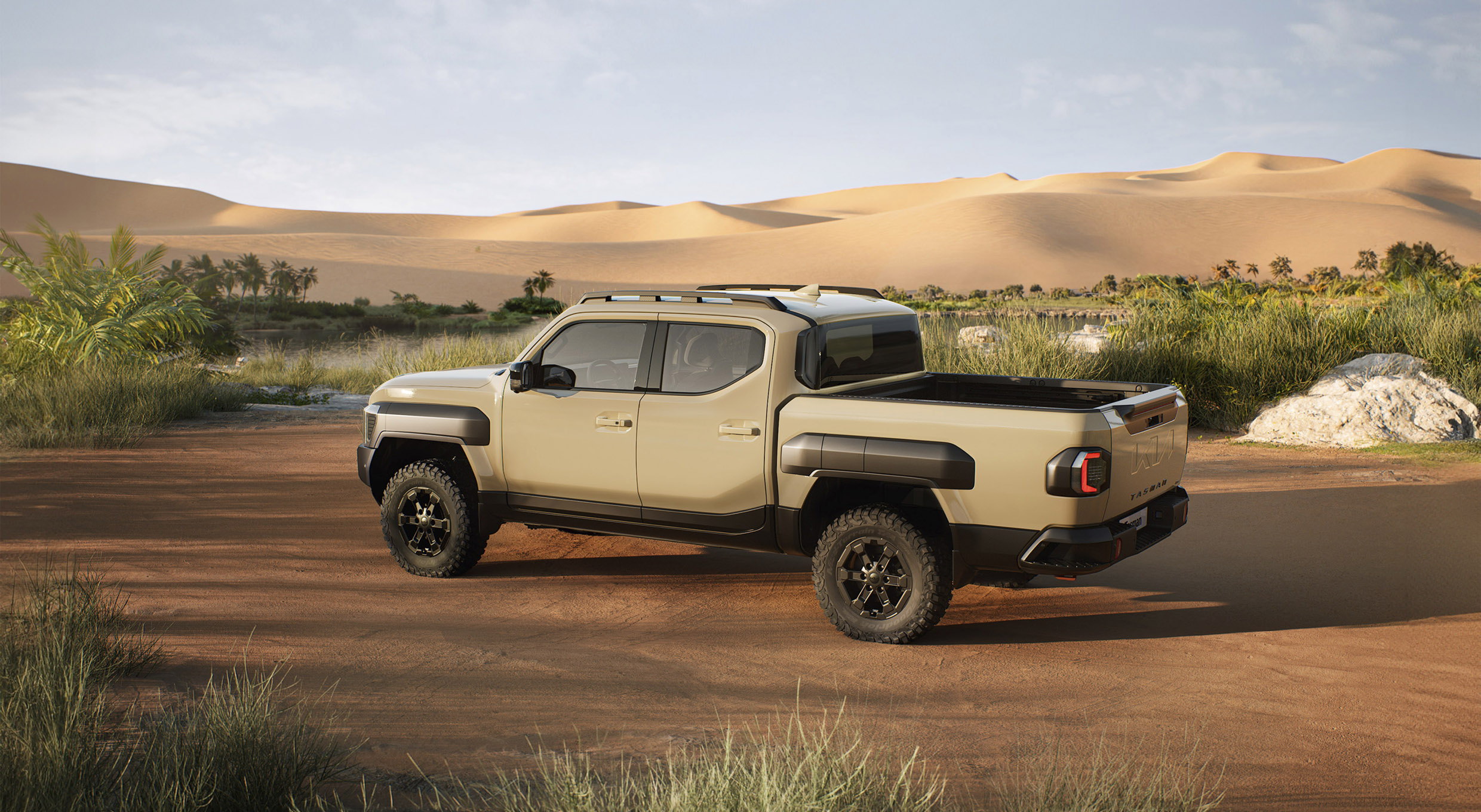
Its exterior design likewise reflects off-road priorities. Even the base 4WD trim delivers a competitive 224 mm (8.8 in.) of ground clearance, with approach, ramp, and departure angles of 28.9°, 23.9°, and 25.0°, respectively—strong numbers for tackling rugged trails. The X-Pro trim goes a step further. “We equipped X-Pro with 17-inch all-terrain tires that have a 28 mm bigger outer diameter,” Lee explained, “and we lowered the front and rear wheel centers by 14 mm, raising ground clearance by 28 mm over the standard model. That yields an additional 3.3° of approach, 1.2° of departure, and 2.1° of ramp angle.”
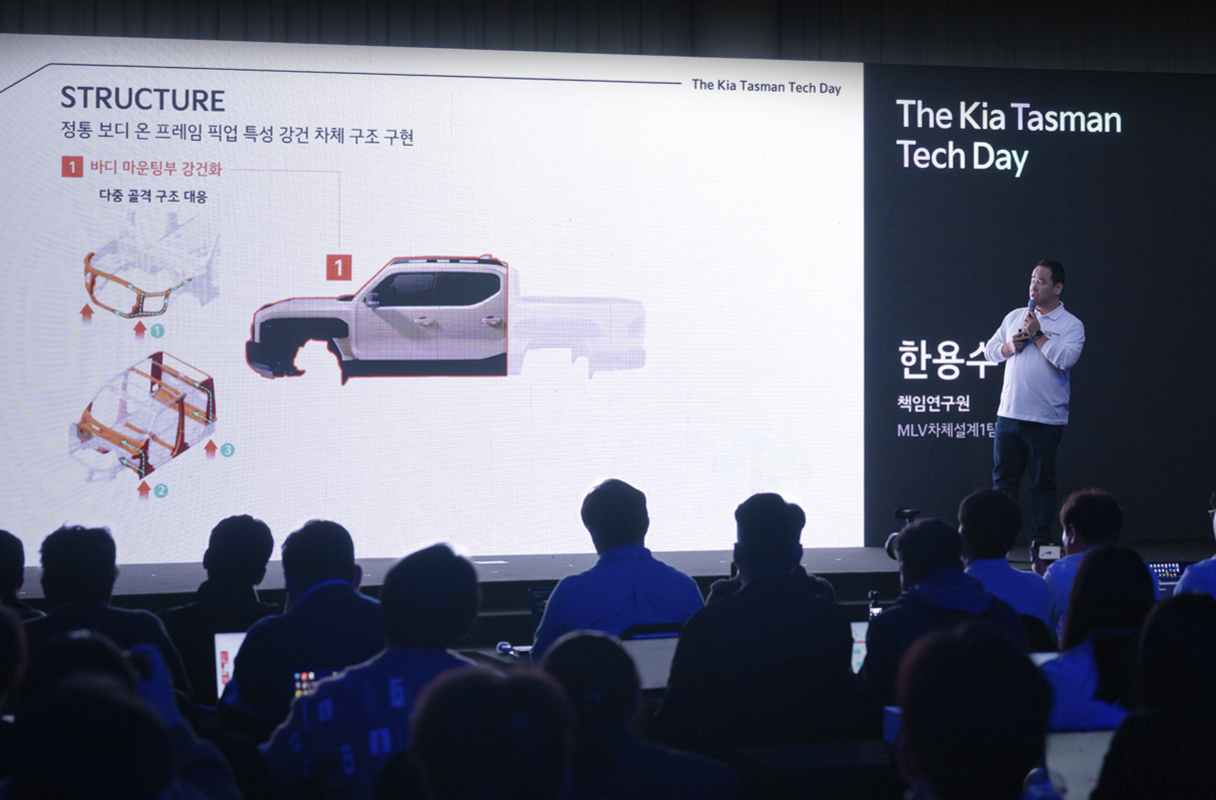
As Senior Research Engineer Yong-soo Han explained, the Tasman’s body is built to distribute road forces effectively and remain torsionally rigid under punishing off-road conditions. “Compared to the Mohave—our existing body-on-frame vehicle—the Tasman’s average body panel strength is boosted by 64%, and torsional rigidity is up by 32%,” he said.

Fording streams or rivers is a big part of serious off-roading, so the Tasman’s air intake sits 950 mm (37.4 in.) off the ground, placed along the outer fender and pointed rearward. Fender-side covers help keep water from spilling in, and major electronic components are mounted 800 mm above the ground on the rear panel to ward off water damage. Meanwhile, the space under the second-row tray includes a drainage system in case water does enter the cabin. A video clip at the event showed the Tasman powering through high water with impressive composure.
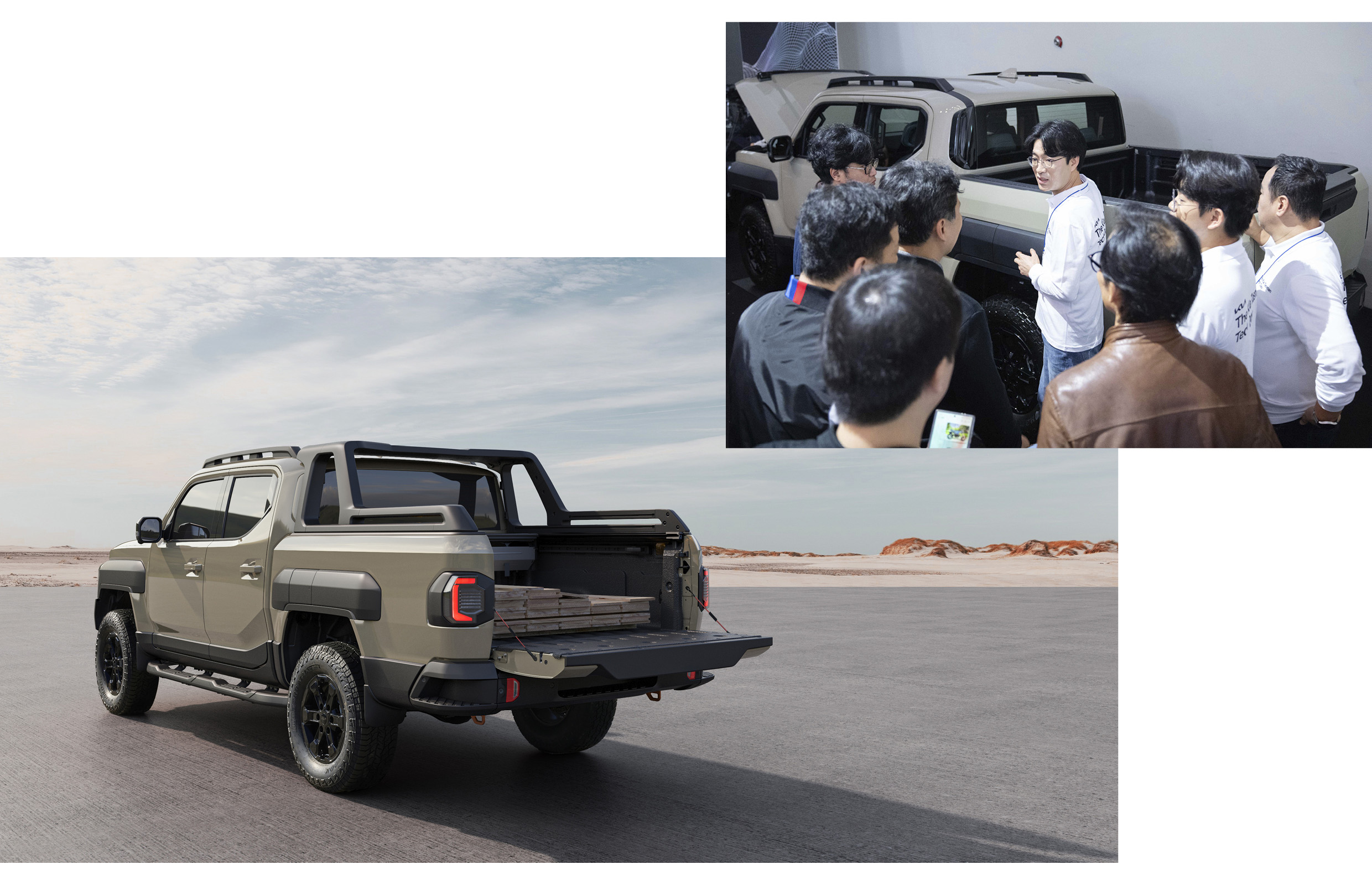
Today’s pickup bed isn’t just about hauling—it’s a canvas for personal style and real-world functionality. Kia’s engineers designed the Tasman bed to accommodate everything from serious cargo loads to bolt-on accessories. The result is a bed that meets high benchmarks for strength, durability, corrosion resistance, and watertightness.
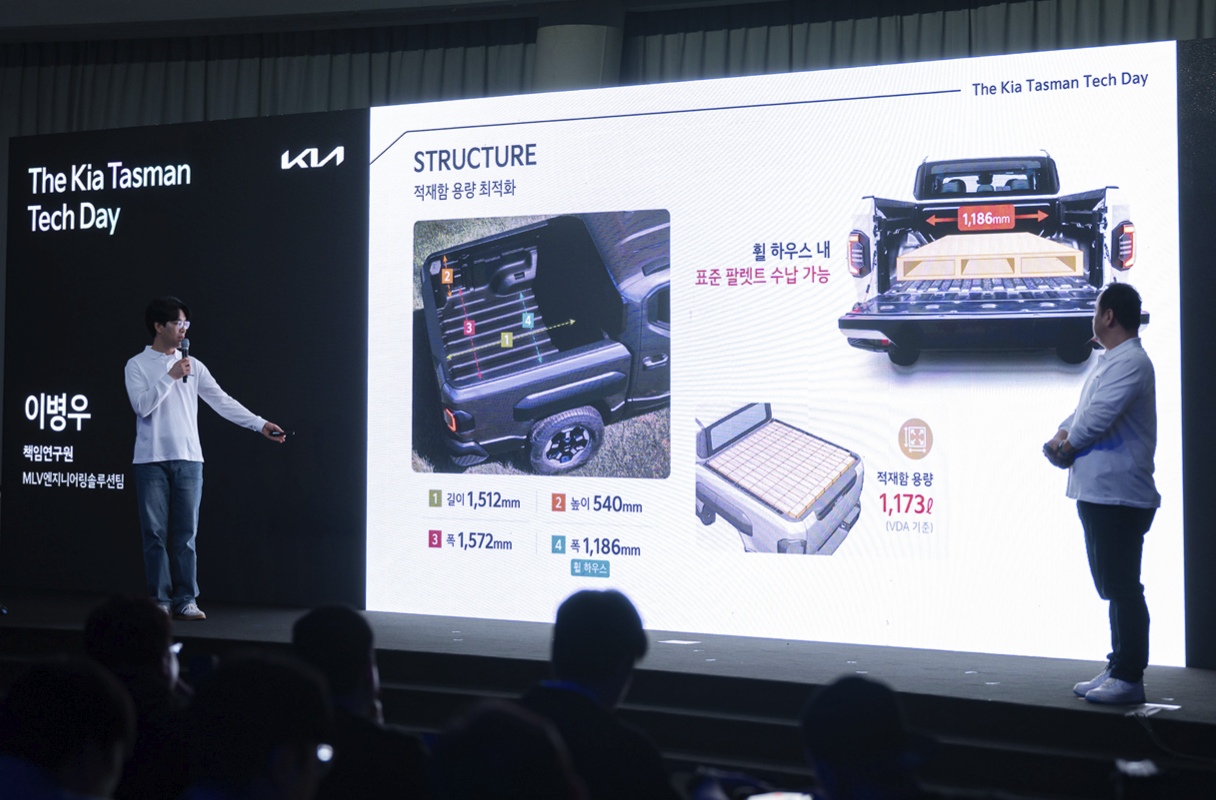
Though its bed area is comparable to other trucks in this segment, the Tasman boasts a maximum cargo capacity of 1,173 liters and can haul up to 700 kg (about 1,543 lb.) in its 2WD form—making it a top-tier contender among midsize pickups. Kia also ad-ded handy features like a 220V inverter, LED bed lamps, a corner step, and side storage to boost everyday usefulness.
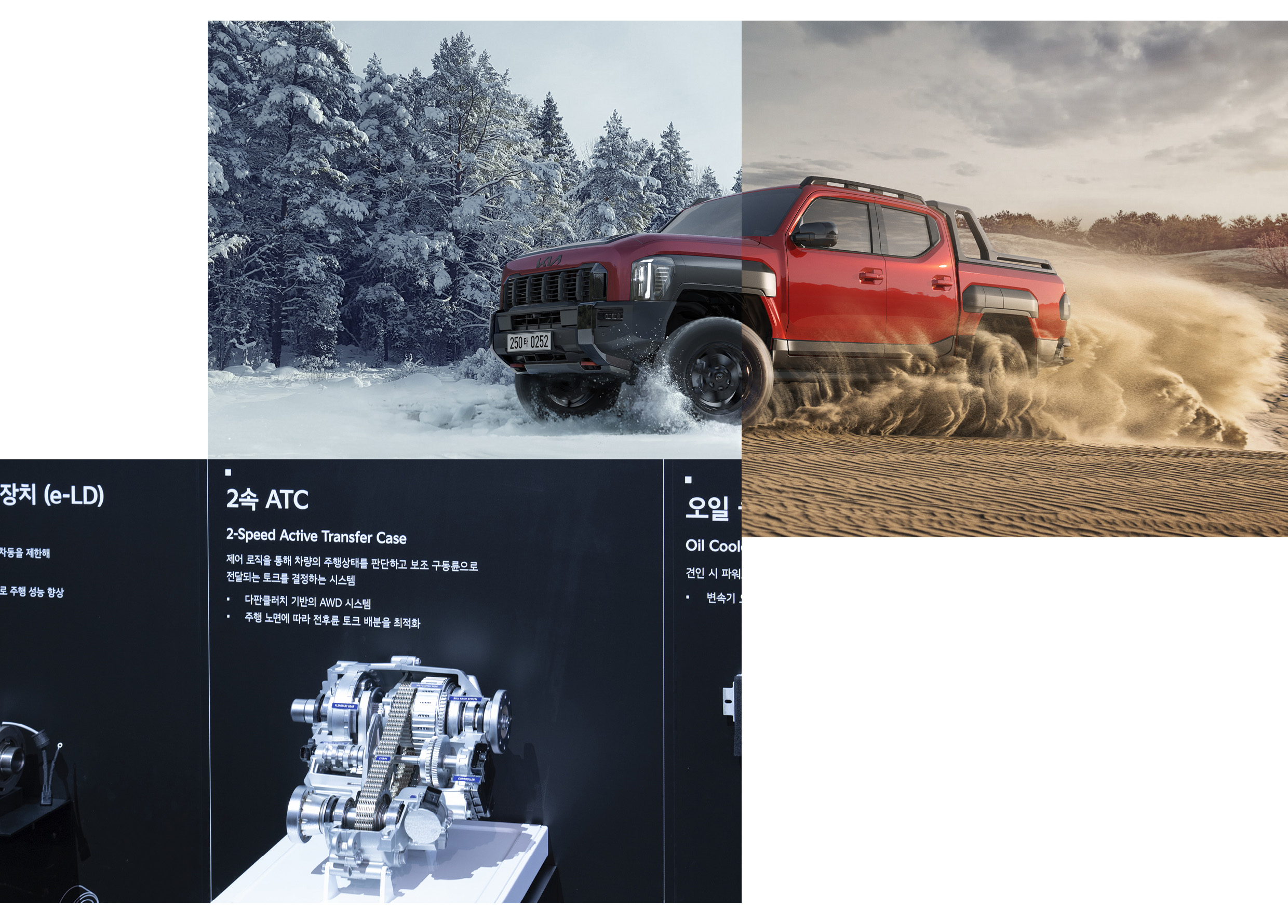
The Tasman’s electronically controlled AWD system, built around a two-speed ATC, sets it apart. Beyond classic part-time 2H, 4H, and 4L modes, drivers can opt for 4A, which automatically distributes power front to rear for maximum grip under varying conditions.
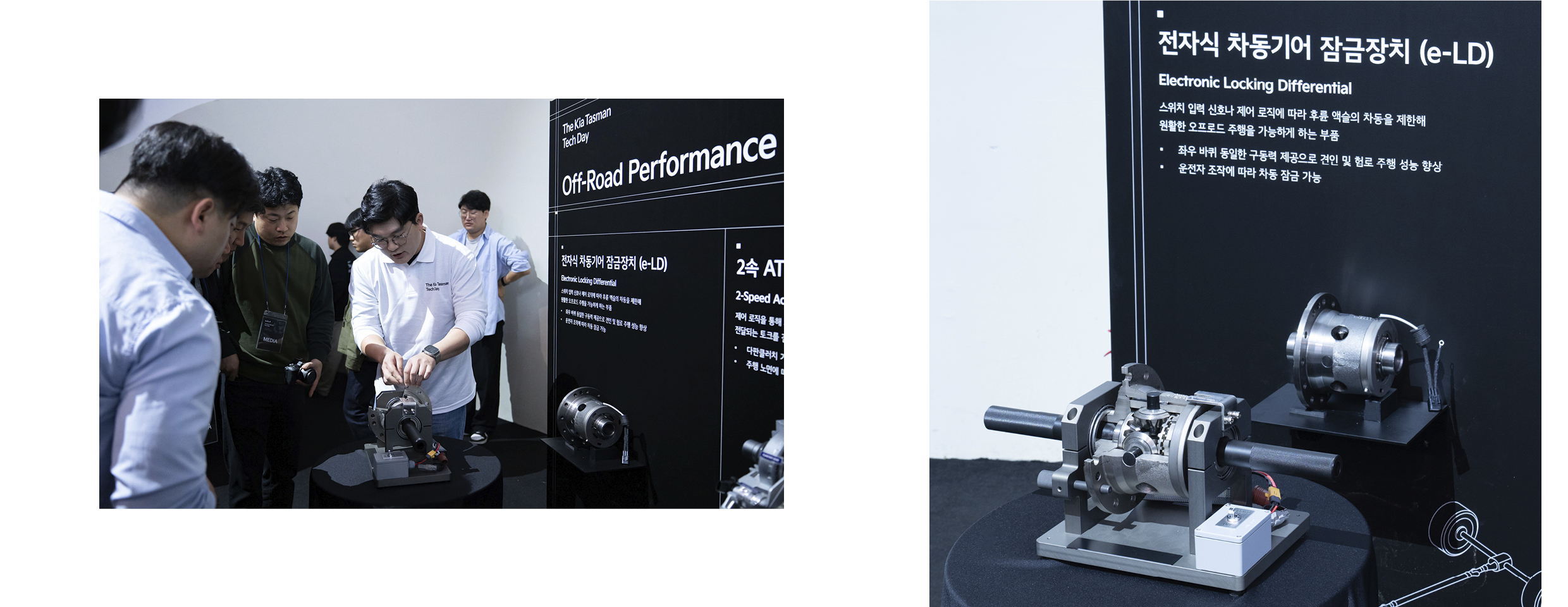
Another key to off-road success is the e-LD (electronic locking differential), which ensures both left and right wheels receive equal torque—crucial in towing situations or over tricky ground. Research Engineer Young-jun Cho from MLV Chassis Test Team showed video demos and noted, “When one wheel is off the ground or traction is low, utilizing the e-LD truly unlocks the Tasman’s impressive capabilities.”

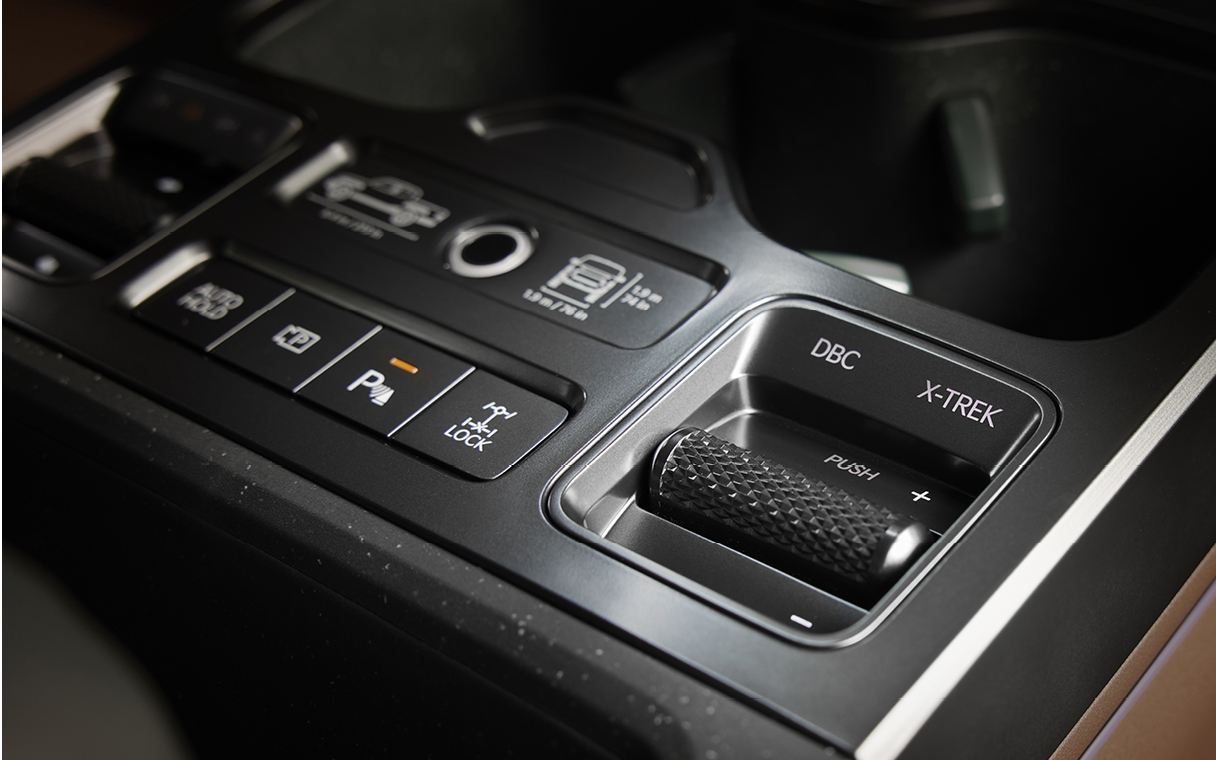
The Tasman comes equipped with five terrain modes—Auto, Snow, Mud, Sand, and Rock—to tackle diverse driving conditions. Auto mode uses AI to analyze the road surface and automatically switches to the most suitable setting. Additionally, the Tasman X-Pro features X-TREK mode, which holds vehicle speed below 10 km/h (about 6 mph) to help maintain control in challenging off-road situations. Research engineer Young-jun Jo explained, “When you activate X-TREK, all you have to do is focus on steering, making it much easier to navigate difficult terrain.”
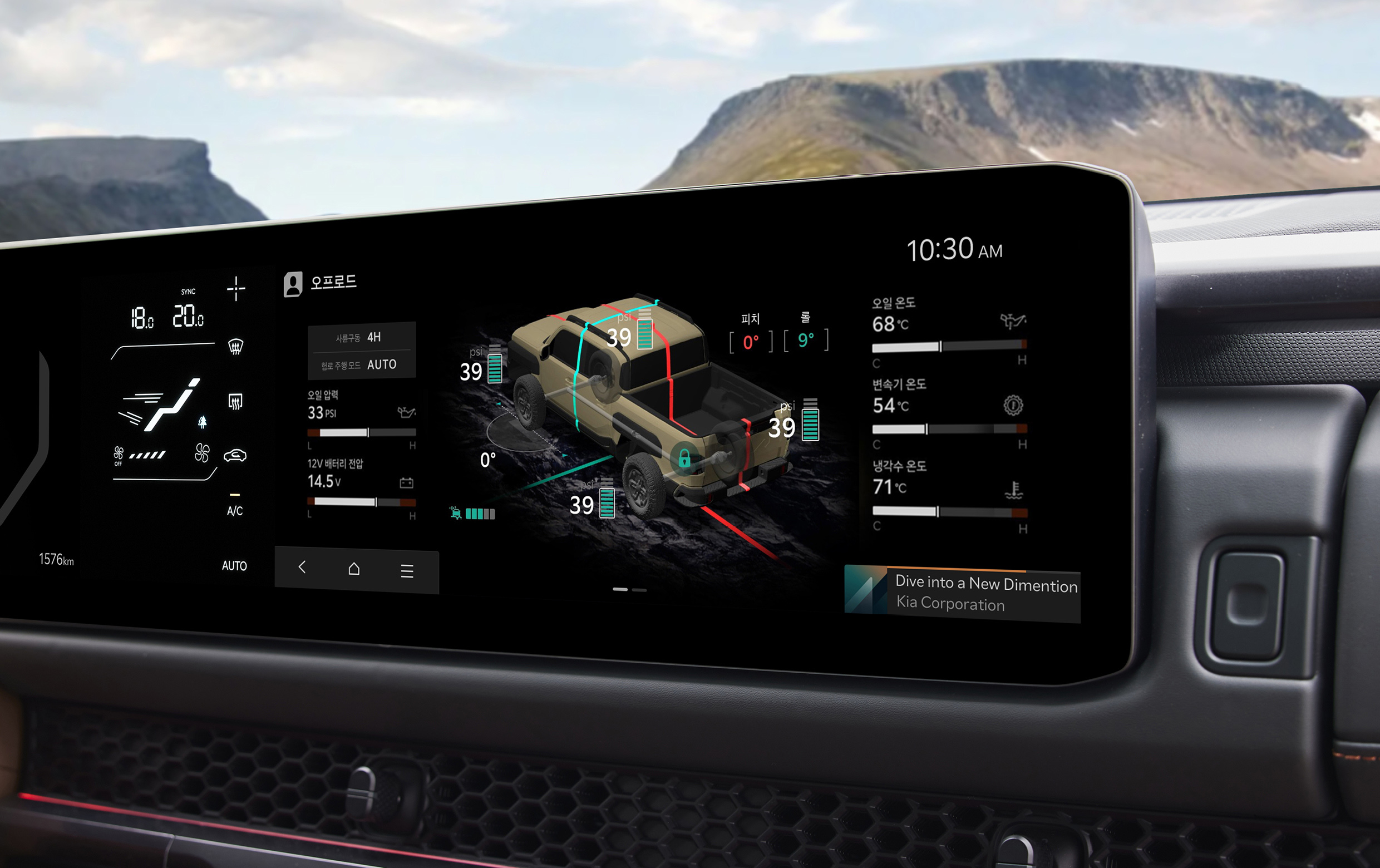
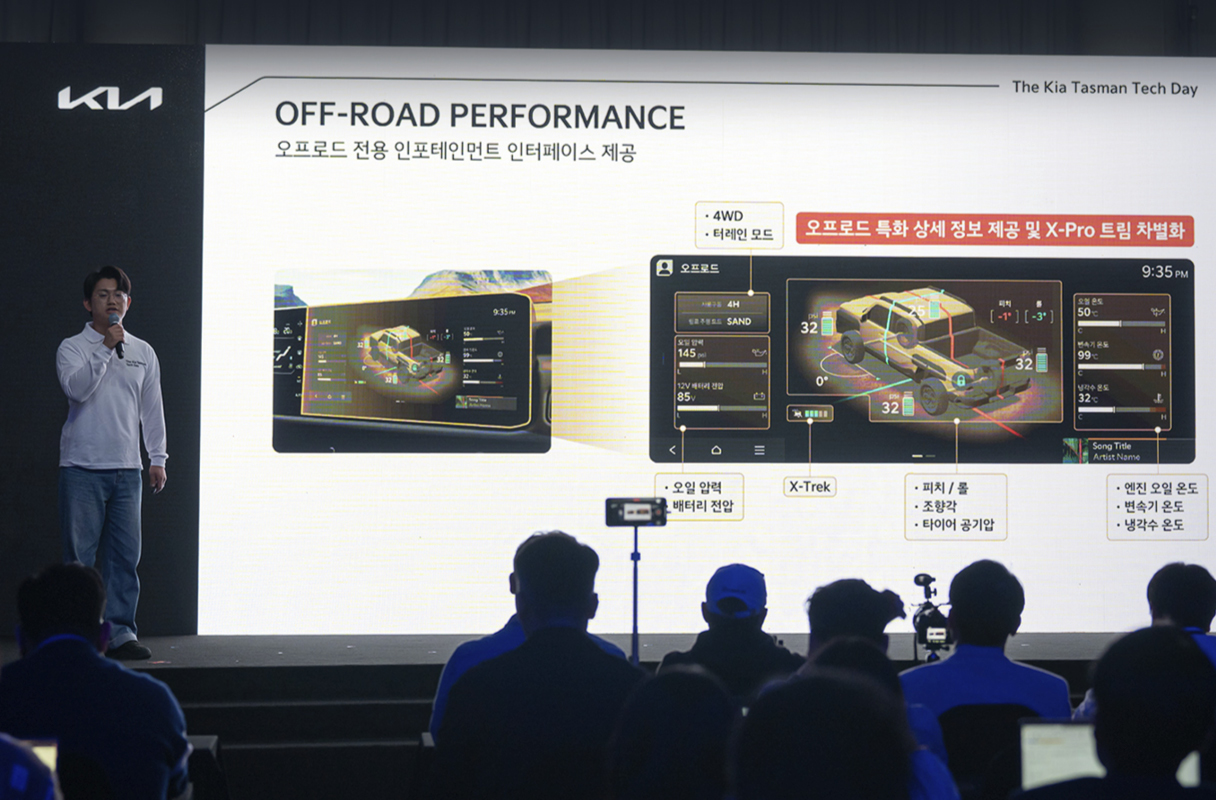
Because of these off-road additions, Kia developed a dedicated infotainment interface, consolidating critical data—like engine oil and coolant temperatures, drive mode status, pitch/roll angles, and steering angle—onto a single screen. A newly implemented Ground View Monitor also lets you keep an eye on what’s happening right beneath the front of the truck. “We wanted to offer customers a new level of enjoyment and experiential value,” said research engineer Do-yeol Bae from MLV Total Vehicle Evaluation Team, underscoring how the infotainment system elevates the off-road driving experience.
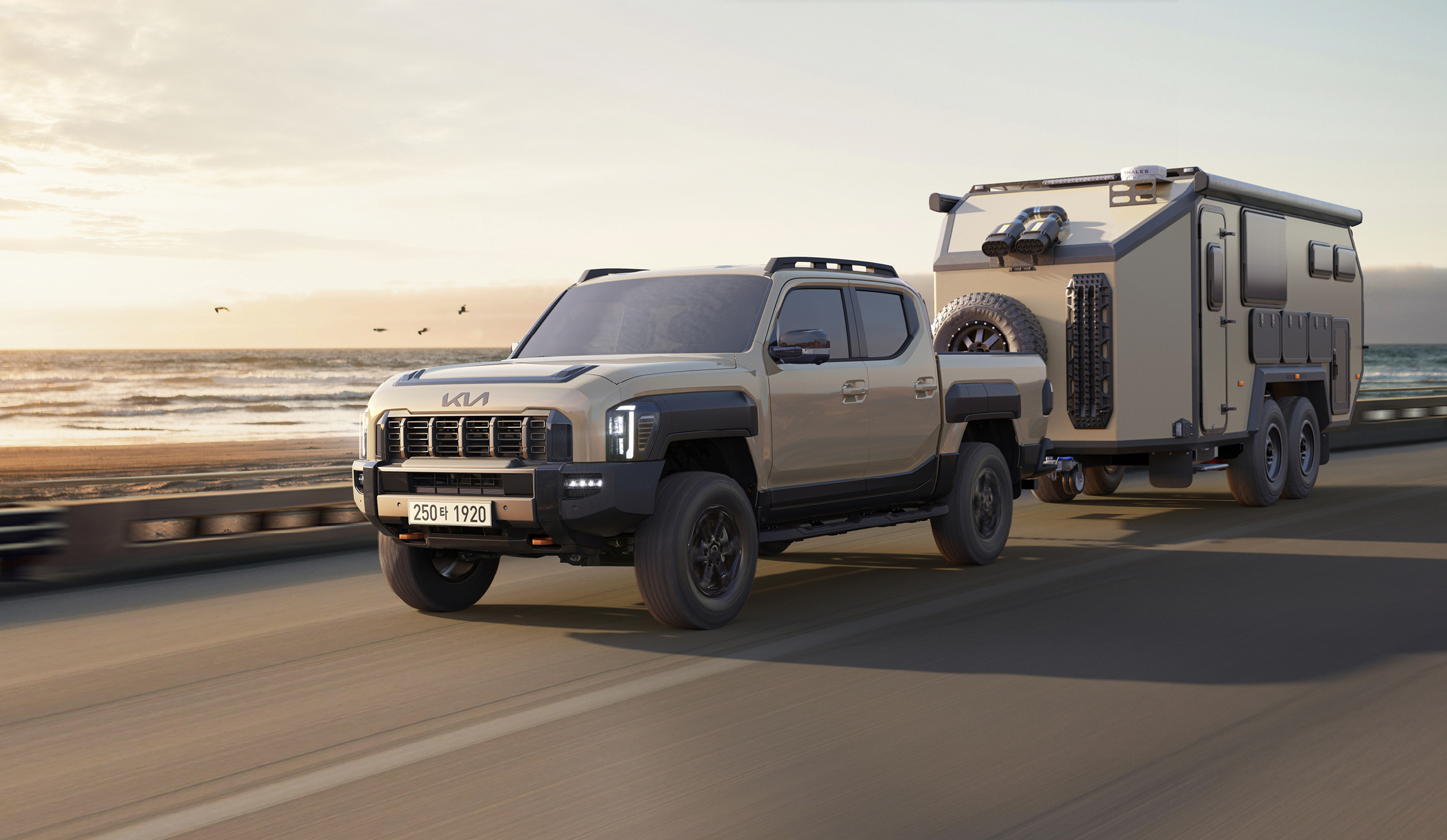
Towing heavy loads and trailers is a must-have function for any pickup. To that end, the Tasman employs an air-cooled transmission oil cooler and a large high-temperature radiator to boost cooling performance. Kia also optimized the transmission’s shift logic and each driving mode’s assist functions, minimizing stress on the powertrain. “We ad-ded an electronic brake controller and trailer assist features to further enhance stability when hauling,” Bae noted.
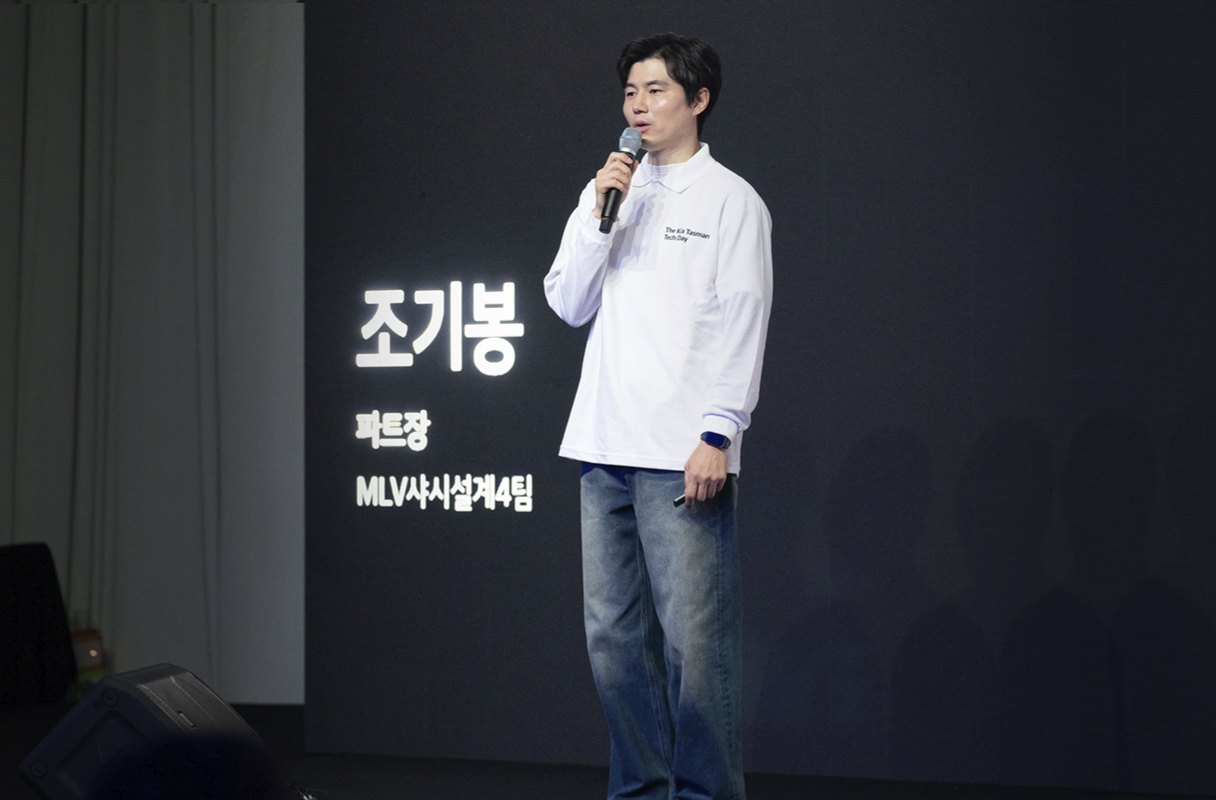
From the outset, Kia’s target was to deliver a bona fide pickup that could also match a family car’s level of comfort. The frame got a rigidity boost, and the front end uses a double-wishbone suspension—a setup chosen to preserve both ground clearance and a plush ride. In back, a rigid-axle leaf-spring layout accommodates the Tasman’s multipurpose nature, but even that has been fine-tuned to improve comfort. All four shock absorbers feature frequency-sensitive valves and urethane bump stops to deliver stability and a smooth ride.
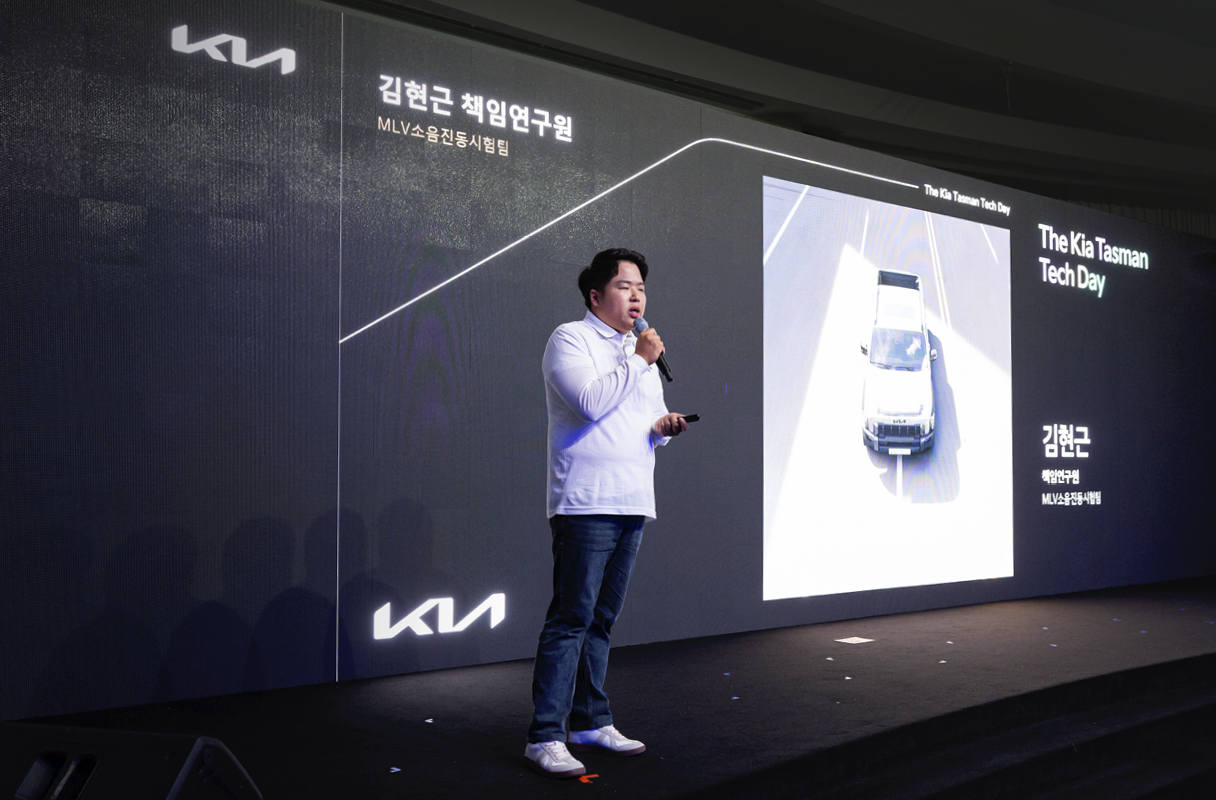
The Tasman also stands out for its NVH performance—an area where typical pickups often fall short. Kia enlarged the sound-absorbing materials around the intake duct and the passenger cabin, while designing the interface between the bed and cabin to cut noise transfer. “We used a duct-type sound absorber structure between the extractor grille (where cabin air is vented) and the interior vent hole,” said senior research engineer Hyun-keun Kim from NVH Test Team. “We also ad-ded seal strips between the cabin and the bed,” he explained, detailing how thoroughly Kia addressed NVH issues.
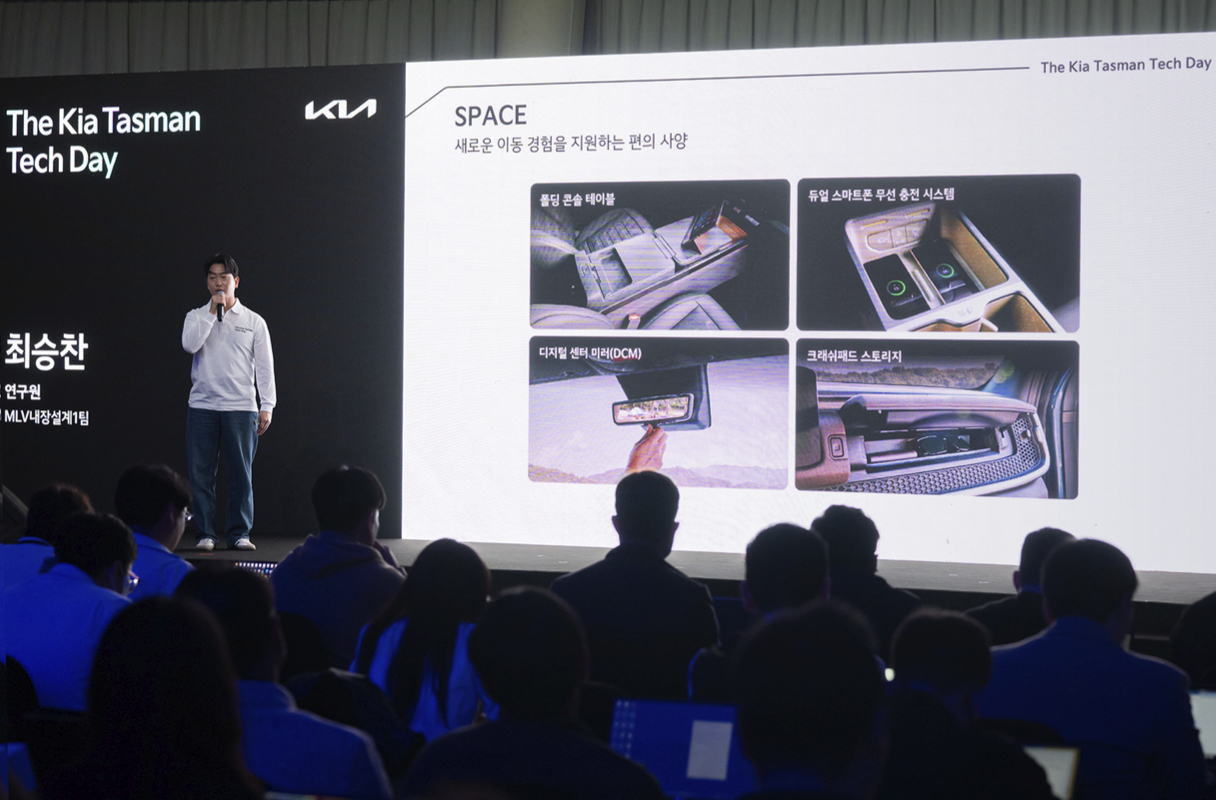
You’ll really notice the Tasman’s strengths once you step inside. The front row boasts premium design cues and cutting-edge convenience features, while the rear row is packed with elements you rarely see in a pickup. Thanks to clever packaging, Kia managed to keep bed space on par with the competition while also carving out some of the segment’s most generous cabin dimensions.
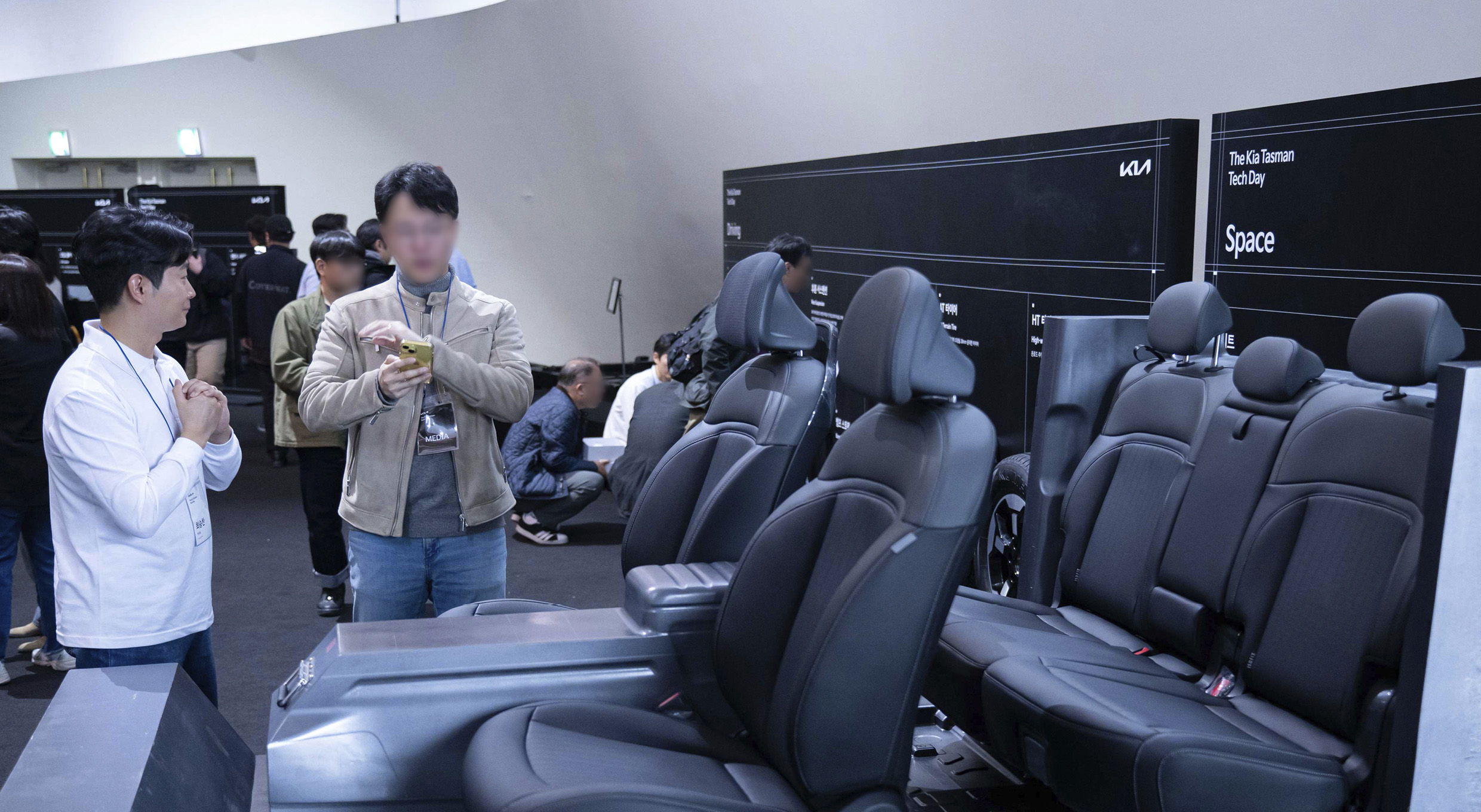
In fact, the rear seat is the first in its class to offer a sliding, linked recline function, delivering comfort levels usually associated with sedans. “Using a scenario where a 169 cm (about 5 ft 6 in.) adult woman sits in the front passenger seat and a 184 cm (about 6 ft) adult man sits in the rear,” said research engineer Seung-chan Choe, “we still see roughly 40 mm (about 1.6 in.) of headroom, 70 mm (about 2.8 in.) of shoulder room, and 80 mm (about 3.2 in.) of knee room in the back seat.” He emphasized that this leads to an impressively spacious, comfortable second row.
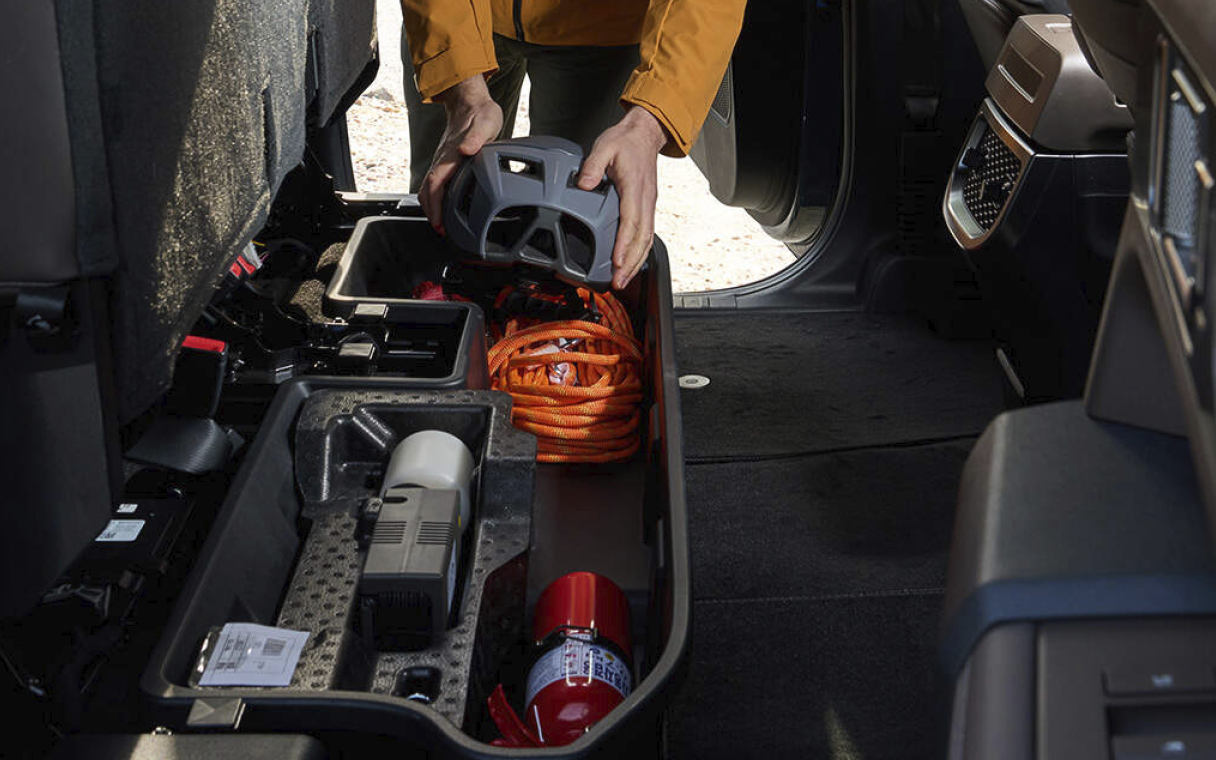
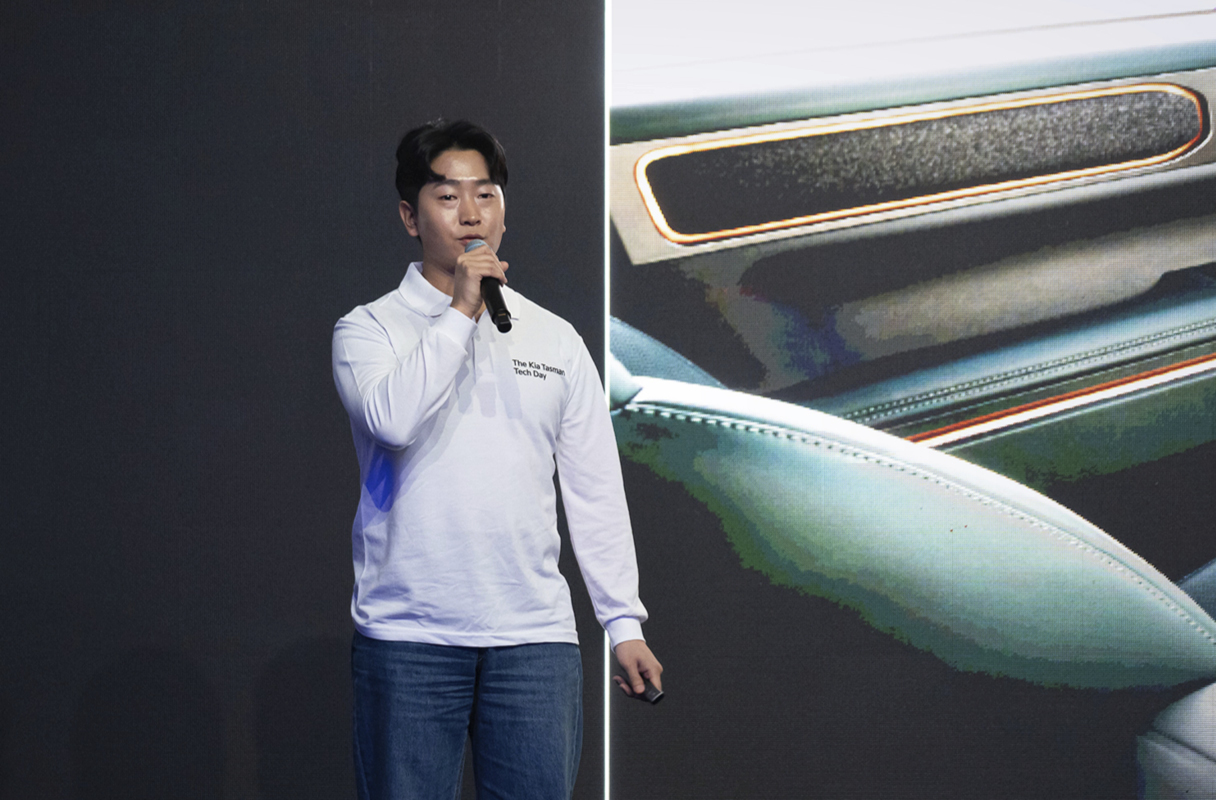
Because pickup owners often need ample interior storage, the Tasman’s rear seats have a standard 6:4 split folding backrest and a tip-up seat cushion for flexible cargo handling. The wide-open rear door hinges let you swing the back doors up to 80°, making it easier to load bulky items. There’s also a 45-liter storage box beneath the second-row seats. “Thanks to the Tasman’s focus on convenience and comfort,” Choe noted, “you’ll find an entirely new travel experience that most pickups simply can’t match.”


After the individual presentations, the floor opened for a Q&A session. Topics ranged from the Tasman’s off-road capabilities and potential hybrid or electric variants, to how Kia might incorporate military-grade insights. The engineers confirmed that they did indeed collaborate with the Special Vehicle Division, leveraging off-road and high-durability data specific to mountainous terrain.
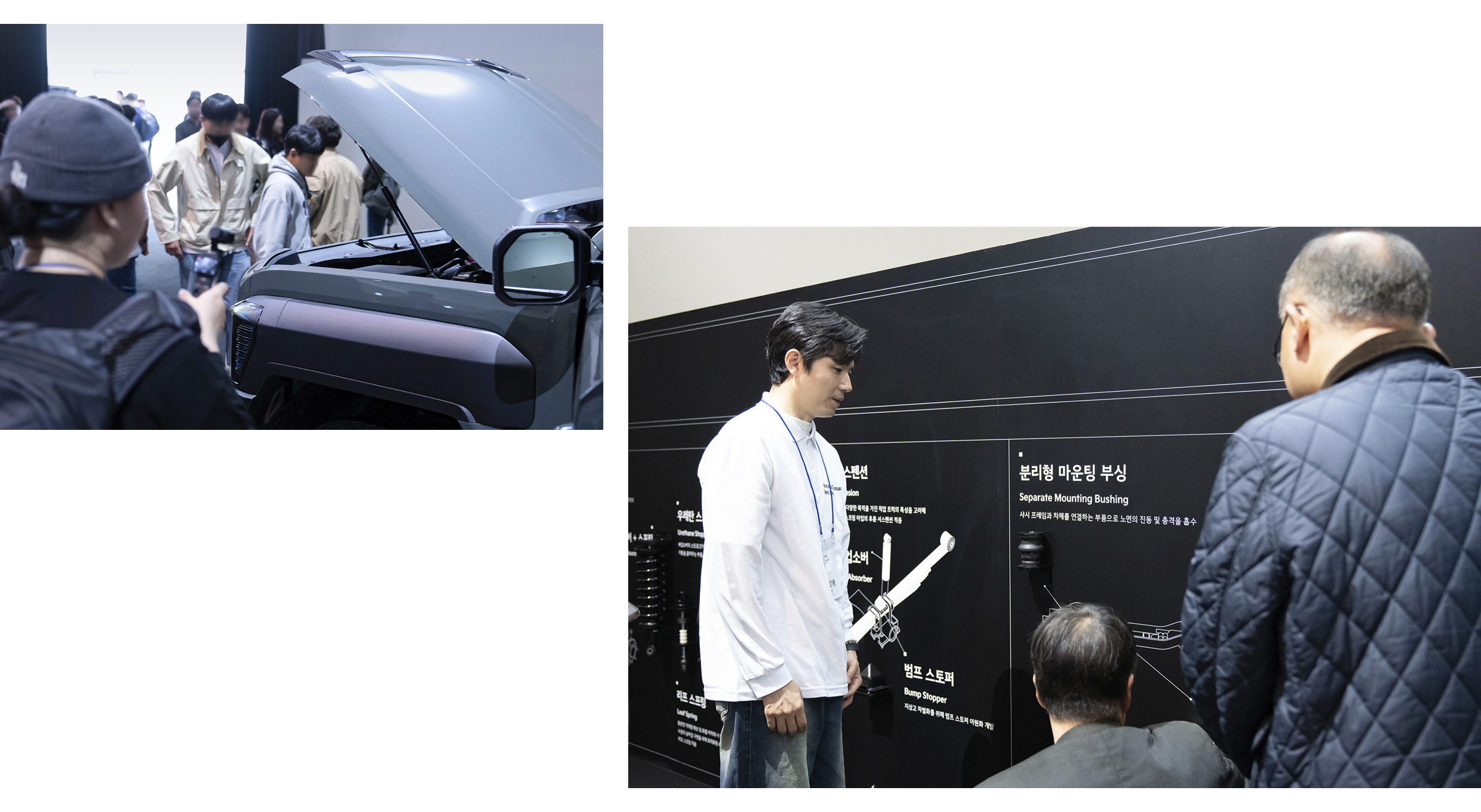
Following the Q&A, attendees explored the Tasman and the exhibit booths in more detail. In addition to the core engineering behind the truck’s chassis, ride quality, and bed, Kia showcased the Tasman X-Pro and its extensive customizing options—attracting plenty of interest from journalists and influencers.
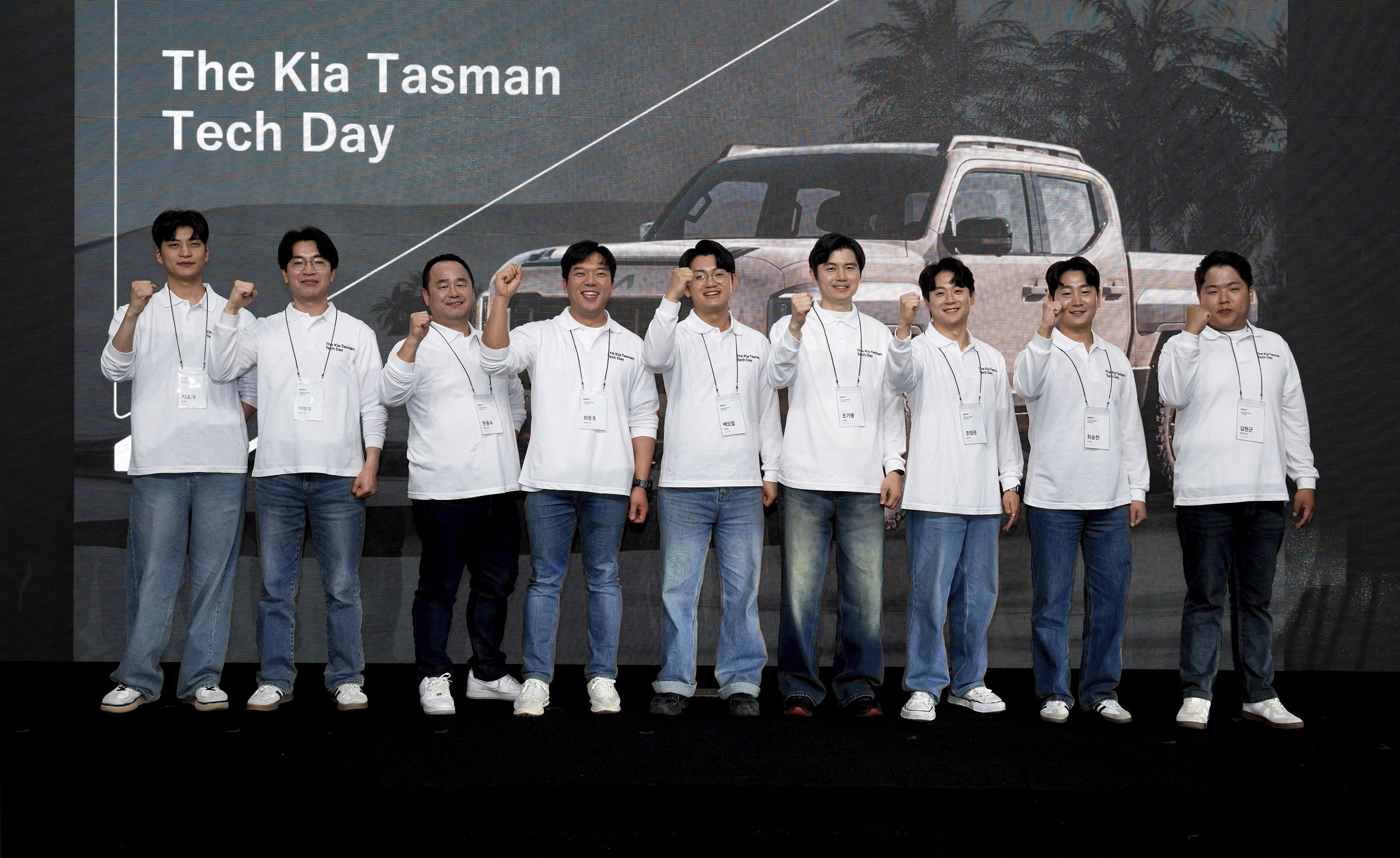
Overall, The Kia Tasman Tech Day served as a crash course for automotive media, introducing the concept of an authentic pickup and revealing the Tasman’s standout strengths. It was also a chance to see the tireless dedication of Kia’s engineers—eager to refine a still relatively new vehicle category for the domestic market while pushing for top-notch quality. As Kia’s first genuine pickup, the Tasman stands poised to reshape our lifestyles in ways we’re only just beginning to imagine.